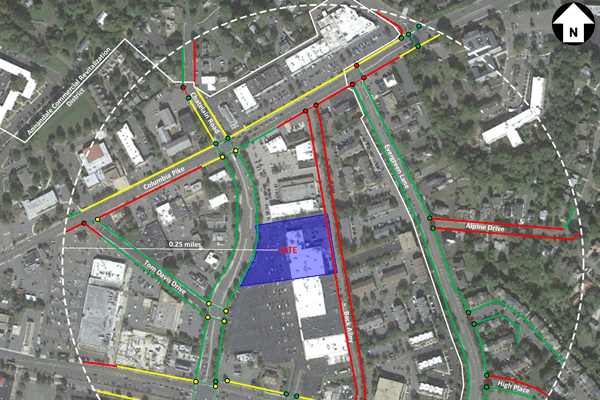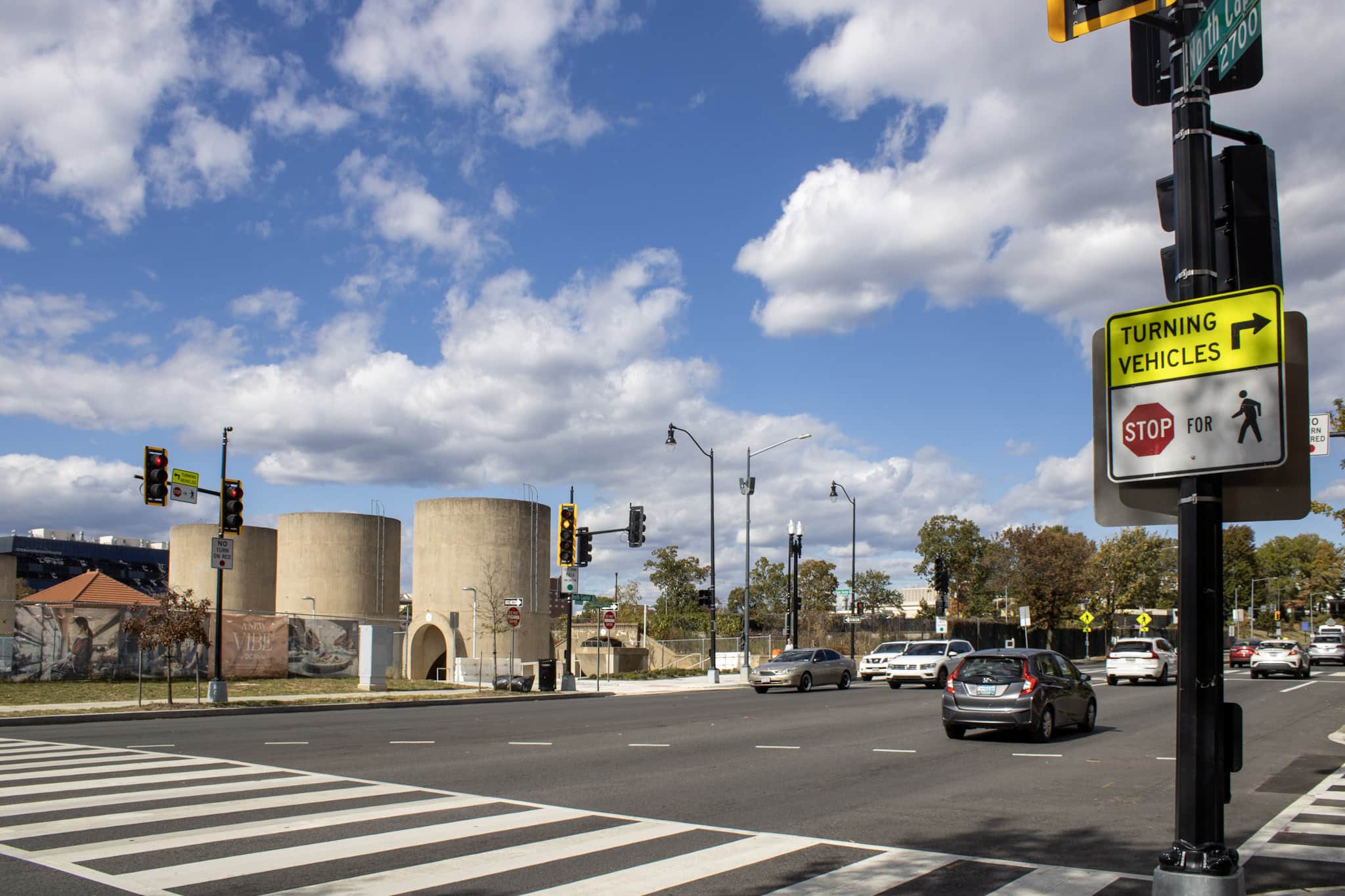
Fairfax County Comprehensive Transportation Analyses
Fairfax County Department of Transportation (FCDOT) released new requirements for transportation studies throughout the County. These enhanced studies are now called <em>Comprehensive Transportation Analyses (CTA)</em> and add a robust, phased multimodal component to the historically vehicle-centric transportation studies. The new requirements are applicable to any application for new and redevelopment projects filed after June 2022 that does not have a previously approved transportation study scope of work.
Both the contents and the timeline of the analyses are changing and will create a tool that kickstarts conversations earlier in the planning/design/project process to help inform site design. This new process injects intentionality in the conversation around access for all modes.
What’s changing?
According to FCDOT’s website, these studies will “assess impacts for multiple modes of transportation from a proposed change in land use, including cycling, walking, riding public transit, and driving,” to provide multimodal transportation improvement recommendations for land use applications.
This update was developed based on best practices within the industry and from other jurisdictions. Updating guidelines to further multimodal access is part of a trend we are seeing nationwide.
What will these new studies look like?
The CTA will provide a one-stop shop for all transportation-related aspects of an application. Elements that were historically depicted only on engineered drawings will now be included in this more robust means to improve existing and future infrastructure.
Phase 1 CTA analysis will include pedestrian and bicycle infrastructure gap analysis, transit analysis, and additional safety analysis. The studies will be a better visual tool that includes photographs of existing conditions and areas of concern with additional graphics depicting solutions for these concerns. The Phase 2 analysis requirements are still in development but will likely take an even more concentrated look at the pedestrian and bicycle experience. The recommendations included in the analysis will become the shared responsibility of the applicant and the County as the project moves forward.
What will be the impact?
The impact of these enhanced studies will create better and safer transportation options for all users. It increases projects’ connections to the surrounding community by looking holistically at how the site can be integrated for all modes. When we create better transportation facilities, we create more enjoyable communities that can translate into economic opportunities for the county. Decreasing reliance on the automobile can also help create positive environmental and health impacts.
The goals and the positive impact of the updated process are clear. The updated guidelines will benefit developers by giving them insight into potential issues and opportunities earlier in the planning process. These enhanced studies will help us all better understand the multimodal trends in the area, and this increased understanding will lead to more targeted transportation improvements for our communities and help us create a safer environment for all users to enjoy.
Contact Maria Lashinger with any questions about Comprehensive Transportation Analyses.
